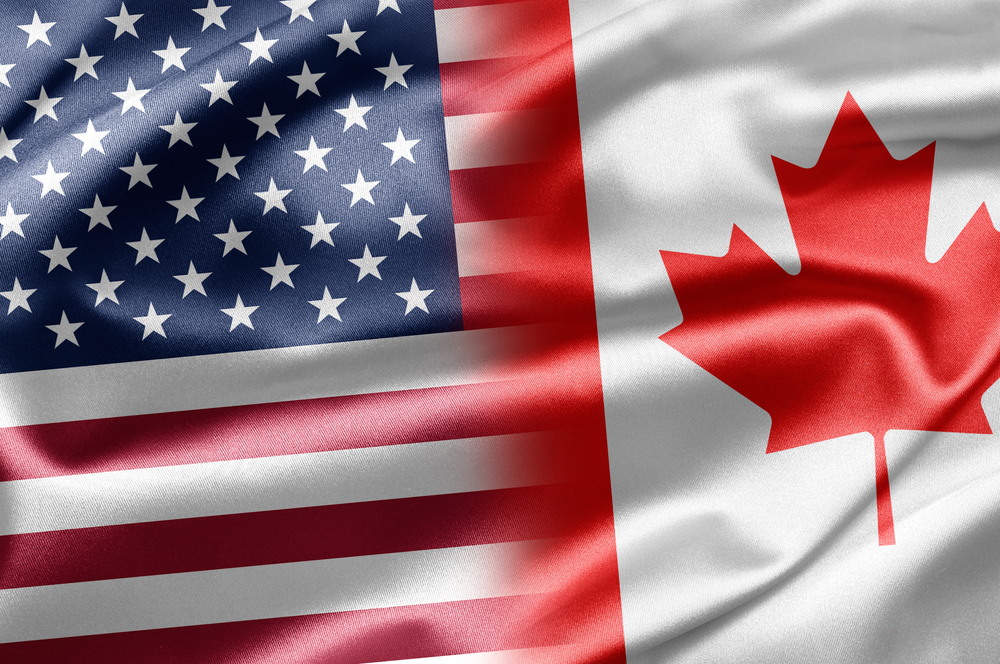
Despite coronavirus travel restrictions, certain U.S. nationals and residents still have options to enter Canada at this time.
Travel between Canada and the United States has been restricted since March 21, to contain the spread of the COVID-19 pandemic. The agreements have since been renewed on a monthly basis.
Individuals who are exempt from Canada’s coronavirus travel restrictions include temporary foreign workers, immediate family members of Canadians, and certain international students.
Those who are travelling to Canada and are exempt still have to demonstrate that the purpose of their trip is for an essential reason and related to critical infrastructure support, trade, work, study or family reunification. Essential travel is defined as travel which is non-optional and non-discretionary.
With few exceptions, those who enter Canada from abroad must undergo 14 days of self-isolation. Furthermore, they must demonstrate that they have an adequate quarantine plan.
Those who wish to travel to Canada for other non-essential reasons, such as cross-border shopping, to go to their cottage or to visit friends, unfortunately, cannot do so at this time.
Immediate family members may enter Canada
Last Monday, Prime Minister Justin Trudeau announced that immediate family members will be able to enter Canada as of June 8, 2020 so long as they meet certain conditions such as coming to Canada for at least 15 days. Since this exemption was announced, the federal government has issued more guidelines to help immediate family enter Canada.
Working in Canada
Since the beginning of the coronavirus pandemic, Canada has put in place several policies to allow workers and students to come to Canada despite border closures.
Most notably, Canada has implemented measures that help employers address labour shortages and facilitate the hiring process of foreign workers. As a result, those who wish to work in Canada may use an accelerated work permit authorization process. Priority processing has also been put in place for some essential occupations.
Canadian employers looking to hire foreign workers in the fields of Information Technology and Science, Technology, Engineering and Mathematics (STEM) can also do so through the Global Talent Stream. This popular stream allows work permits to be processed in as little as two weeks for those individuals who have eligible job offers in Canada’s tech industry.
Study options
Canada also made a major change to its Post-Graduation Work Permit (PGWP) rules for international students who want to study in Canada starting in the fall. The PGWP enables international students to gain Canadian work experience after completing their educational program at a Canadian designated learning institution (DLI).
Normally, online courses do not count toward the study requirement for a PGWP application. However, given coronavirus-related travel interruptions around the world, Immigration, Refugees and Citizenship Canada (IRCC) has relaxed the rules and is now allowing international students to study online while overseas and still be eligible to apply for the work permit after graduation.
IRCC is also exempting overseas biometrics requirements for some foreign workers and has indicated it will aim to process as many study permits as possible in time for the start of the fall 2020 academic semester.
Canada has over 80 economic class immigration pathways
With the H1-B visa program in the United States in jeopardy and the tens of thousands of foreign workers who have placed their hopes in this program worried about their future, the prospect of moving from the United States to Canada may become an increasingly appealing option.
Unlike the U.S where immigration has been temporarily banned, the Canadian government remains committed to welcoming immigrants and the immigration minister Marco Mendicino has made several remarks that immigration will continue to be key to Canada’s economic success and post-coronavirus recovery.
Both the federal government and provinces have the authority to operate immigration programs. Collectively, they run over 80 pathways available to skilled workers under Canada’s economic class.
The most common way to seek permanent residence in Canada is through the Express Entry system. Throughout the pandemic, Canada has continued to hold bi-monthly rounds of invitations through the Express Entry system, with most recent draw having taken place on June 11.
The second most common way to obtain permanent residence is through the Provincial Nominee Program (PNP).
Most Canadian provinces and territories have their own PNP with each one specifically designed to target immigrants who match specific labour market and economic needs in their respective regions.
PNPs have been active over the past few weeks, with invitation rounds taking place in most Canadian provinces. In fact, more than 2,000 invitations to apply for a provincial nomination for permanent residence have been issued in May and already over 1,000 in June.
Why applicants from the U.S. have a competitive advantage
Immigration applicants from the U.S. are well-placed to gain Canadian permanent residence due to their English-language fluency, professional work experience, and high levels of education. It is for these reasons that U.S. residents are among the top 3 sources of successful candidates under Express Entry.